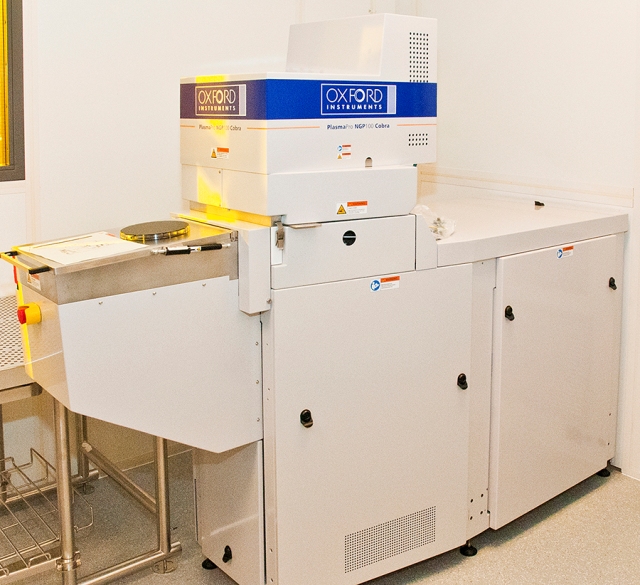Feb 26 2016
The need for a more precise process to etch devices used in magnetic random-access memory (MRAM), seen as a potential “universal memory” technology, has spawned a novel process involving researchers at Cornell.
 The Oxford Instruments PlasmaPro Cobra 100 etcher utilizes a methanol-argon vapor delivery system, which is more precise than traditional ion milling for etching. The Cornell NanoScale Science and Technology Facility partnered with Oxford in the development of the device. Credit:Oxford Instruments
The Oxford Instruments PlasmaPro Cobra 100 etcher utilizes a methanol-argon vapor delivery system, which is more precise than traditional ion milling for etching. The Cornell NanoScale Science and Technology Facility partnered with Oxford in the development of the device. Credit:Oxford Instruments
In a cross-ocean collaboration, the Cornell NanoScale Science and Technology Facility (CNF) and longtime scientific partner Oxford Instruments Plasma Technology of the United Kingdom have developed and optimized an etch recipe for magnetic materials in the PlasmaPro 100 Cobra, an inductively coupled plasma system that promises etching capabilities far superior to traditional ion milling.
The new system, with a price tag of around $500,000, is something CNF has wanted and needed for years, according to Don Tennant, CNF’s director of operations.
“This etcher will be used for nanophotonics, as well as magnetics, so this will fill two very important technology needs,” he said. “Faculty came together along with our own CNF resources to make this happen. It is a great example of a collaborative, grass-roots process to meet a research need.”
CNF and Oxford Instruments have collaborated for more than a decade, and the Cornell facility already had several other Oxford etchers.
The chemical reaction generated by the methanol-argon etching of the PlasmaPro 100 makes it inherently more precise than the purely physical process of ion milling, according to Vincent Genova, a research staff member at CNF.
“With chemically etched processes, you gain the selectivity, because it’s inherent to the process that you produce a volatile compound, rather than just physically eroding it,” Genova said. “So you not only have the precision of stopping on a certain layer, but you can also control the etch rate. You can slow it down tremendously.”
One element of MRAM device fabrication involves the etching of the magnetic tunnel junction (MTJ) stack, a complex of several elements sandwiched between a non-magnetic substrate and a hard mask. Etching each of the interior layers by purely physical means (ion milling) can result in redeposition of materials onto side walls and damage to the device.
In its development, the CNF/Oxford process showed the ability to etch with precision a 41-nanometer-thick MTJ stack with high selectivity. A nanometer is one-billionth of a meter; a human hair is approximately 50,000 nm wide.
Genova credited Oxford Instruments with coming up with the methanol vapor delivery system in the PlasmaPro 100. Liquid methanol is stored at room temperature inside the system and is delivered with precision through a mass flow controller. Methanol, as the principal plasma reactant, forms volatile carbonyl compounds from Ni, Fe, and Co based materials at room temperature.
Dan Ralph, the Lester B. Knight Director of CNF, whose research group is one of the main users of the CNF facility, said the novel vapor delivery approach didn’t require a complete reinvention of the etching process.
“Once it’s inside the tool, it’s like other etchers,” he said, “but how you get things plumbed up is unique to this device.”
CNF, housed in Duffield Hall, hosts between 550 and 600 users annually. A little more than half are from Cornell, but others have come from 40 states and several countries to use the nearly two dozen etching devices and other tools for photolithography, furnace processing, computing and more.
“We’re a very flexible lab, so we want to be able to work with biologists, chemists, physicists and engineers in a variety of disciplines,” Tennant said. “This lab is a rarity among university resources, and we’re open to anyone.”
Now in its 39th year, the CNF is a national user facility and member of the National Nanotechnology Coordinated Infrastructure, which is supported by the National Science Foundation.